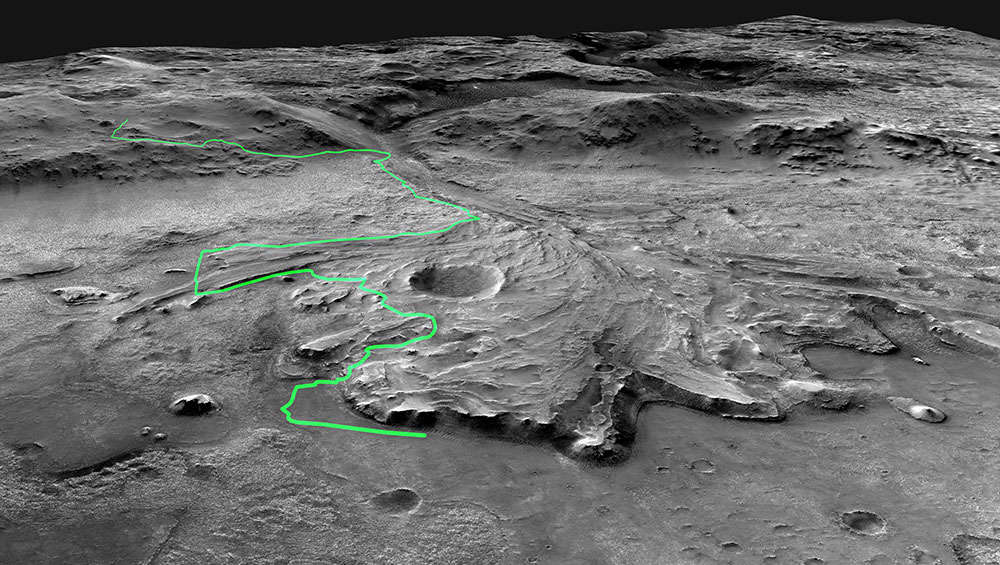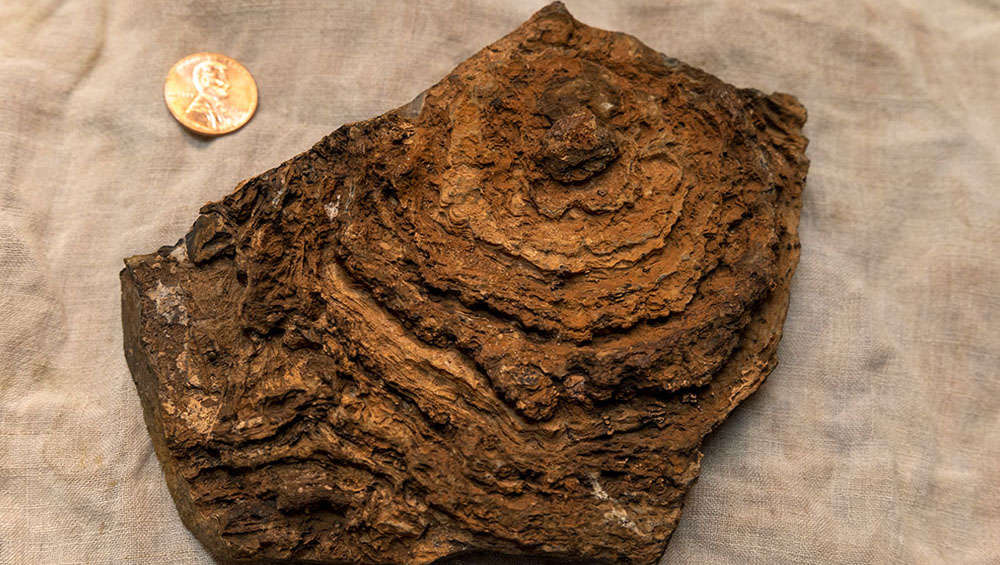Create a free profile to get unlimited access to exclusive videos, sweepstakes, and more!
Perseverance is searching Mars for signs of alien microbes, but will we know if it finds them?

Now that Perseverance has landed and everyone who was in that mission control room can finally breathe again, the rover will be scoping out Mars for any evidence of things having lived (or even living deep underground) on the scorched and frozen planet.
Perseverance is a mission in itself, but also the first phase of the Mars Sample Return Mission that will eventually bring a piece of another planet to Earth for the first time ever. The rover will dig cores of Martian soil that it will leave in a cache for a later spacecraft to pick up and load on a rocket that will fly it into orbit. The final spacecraft in this endeavor will capture the cache in orbit and bring it back to home turf. We’re still some years away from that. But for now, how are Earthlings going to recognize what could be fossilized alien microbes in the data that Perseverance beams back?
“Our approach to this is to determine what characteristics all life on Earth shares – what are fundamental characteristics of life? For example, all life on Earth is cellular – it is enclosed by an 'envelope' that maintains a set of internal conditions that are distinct from external conditions," Ken Williford, deputy project scientist for the Perseverance mission at NASA’s Jet Propulsion Laboratory (JPL), told SYFY WIRE.
Jezero Crater, where Perseverance is now creeping around, is thought to have been a lake with its own river delta around 3.5 billion years ago. River deltas on Earth are hotbeds of life. It was the fertile Nile river delta that gave Ancient Egypt its riches and renown. No wonder surrounding forces wanted to seize that prime location for themselves, but don't expect any evidence of ancient alien wars on the Red Planet. While it is doubtful that there were little green men or anything remotely humanoid on Mars, there could have at least been microbial life that benefited off nutrients that were potentially washed up in Jezero Crater.
"All life on Earth metabolizes – it takes in material from its environment and uses a flow of electrons that results from chemical transformations to drive its growth and reproduction," Williford said. "These are features not necessarily restricted to 'life as we know it' on Earth, but they seem to be required characteristics of something we would call alive.”
Hold off fast-forwarding to the future for a second. Perseverance may not have been able to bring every possible piece of life-detecting equipment with it, because it would have been too heavy a load for the rover to drag around, but it has some highly sensitive instruments that could reveal potential signs of life, even from 40 million miles away. On its mast are Mastcam-Z, which can zoom into whatever is of potential interest, and SuperCam, which can shoot laser beams at interesting targets to find out their chemical composition.
Back on Earth, scientists monitoring the rover can control its robotic arm to close in on anything that is especially intriguing. The end of that arm is equipped with PIXL (Planetary Instrument for X-ray Lithochemistry) that will delve further into the chemistry of what it’s seeing with superpowered X-rays. Its SHERLOC (Scanning Habitable Environment with Raman & Luminescence for Organics & Chemicals) also has a laser to search for organics and minerals that would have needed water to form. These instruments will collaborate to send back hi-res maps of what is hidden in the Martian regolith.
"Perseverance is jointly controlled by scientists and engineers on Earth via a sequence of daily strategic and tactical planning meetings," said Williford. "Each day, we evaluate the latest data that have come down (downlink), discuss the science and engineering implications of the new data relative to our strategic plan, adjust our tactical plan accordingly, build the commands needed to execute the activities that we want, and 'uplink' those commands to the rover."
Knowing the chemical compositions around Jezero crater will help scientists determine where to send the rover to dig up those cores that are destined to fly to Earth. When they arrive, then what? Of course, any scientist looking for signs of past life would want to find evidence of a surface feature that could have only been created by microbes. Stromatolites, thick mats of bacteria that thrive near heated vents on the ocean floor, are one type of formation that is already familiar on Earth in both its living and fossilized forms. But if a Martian rock looks like a stromatolite, what biosignatures can tell us if it really was alive once?
"If we found a rock that looks like a stromatolite, and it had concentrations of biologically important elements as well as organic molecules, this would be very exciting," Williford said. "Chemical elements like C, H, N, O, P and S are critical to all known life on Earth, but other elements associated with life include, Fe, Si, Mg, and Ca. Organic molecules are obviously very important. Mineral classes commonly associated with watery environments, including carbonates, sulfates, phyllosilicates, and others are also important. "
Besides the bacteria that make up stromatolites, there are other microbes from our planet whose analogs may have once been crawling on Mars. The three types of life on Earth are Bacteria, Archaea, and Eukarya. Bacteria and Archaea are the most common forms of life here (Eukarya includes more advanced multicellular organisms like us). These uncomplicated, single-celled organisms that are lacking a nucleus are most likely to have Martian cousins.
Williford is open to the possibility of finding life as we know it — and life as we never could have imagined it.
"My suspicion is that if life ever existed on Mars, it would have been most similar to Bacteria or Archaea," he said. "The biggest question is whether any organisms that existed on Mars could be classified in one of Earth’s three domains, that is, whether or not we can recognize more than one 'tree of life.' If we found evidence of life on Mars, we would want to know whether it was related to Earth life (possibly a result of exchange of material between the planets), or whether it represents a 'second genesis' event."
The most promising places to look for biosignatures, signs of life that may have thrived on the Red Planet before its atmosphere was blasted away, is thought to be Jezero Crater’s dried-up lakebed and sediments that once made up its shoreline. By no means are those the only places on Mars that life could have been crawling around. Maybe there are microbes or fossils of them deep below the surface where water that would have been otherwise vaporized by solar winds still exists. There could also be other places on Mars that nobody ever imagined were habitable.
Perseverance might come across things that nobody ever imagined. While searching for life as we know it, we might come across life as we never knew it.



























